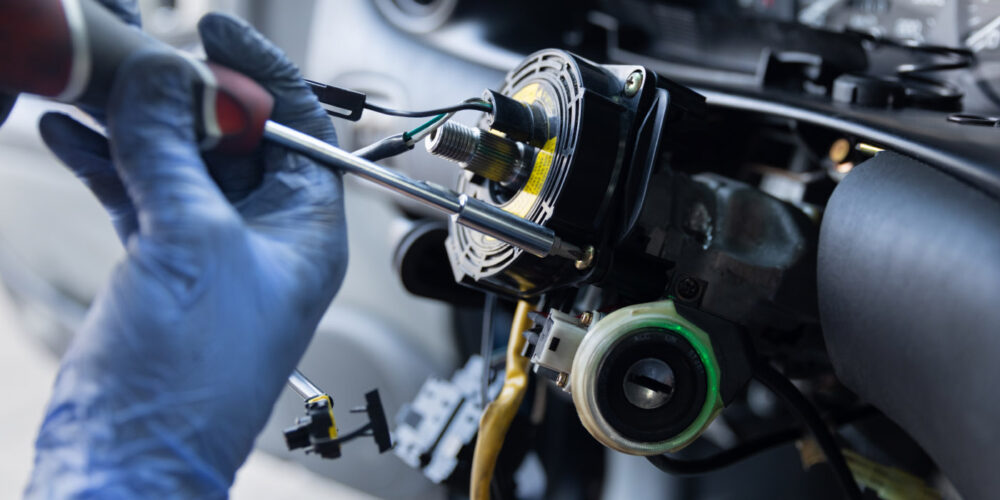 “Why is cycle time so important? It seems the body shop industry has changed in that insurance companies’ No. 1 focus is now cycle time.”
“Why is cycle time so important? It seems the body shop industry has changed in that insurance companies’ No. 1 focus is now cycle time.”
Asked by: Cuu Thi, manager, Crenshaw Collision Center, Los Angeles, Calif.
Question answered by: Hank Nunn
Yes, the collision repair industry continues to evolve, and cycle time is certainly a leading key performance indicator (KPI) for both collision repairers and insurers. While we all talk about cycle time, there is not a standard definition of cycle time in a collision repair shop.
Definition
BusinessDictionary.com defines cycle time as: The period required to complete one cycle
of an operation; or to complete a function, job or task from start to finish.
This definition points to the problem with the use of cycle time as a KPI in the collision repair industry. In collision repair, there are many components to cycle time. Cycle time for an insurance company is not the same as cycle time for the collision repairer.
Measurement
Not only is there not a standard definition, but there also isn’t a standard measurement of cycle time in collision repair. While most measure “keys to keys,” or drop-off to delivery, others measure first customer contact to delivery. An insurer may measure the cycle from the initial report of the claim to final payment of the claim. Some measure the number of days the insured or claimant is in a rental car.
A Big Focus
So why do insurance companies focus on cycle time? The obvious answer is that they want to control their rental car or loss of use expense. Reducing the repair time for their insured or claimant reduces loss of use and rental expense.
In addition, insurance is a competitive business. Just watch TV for awhile and you’ll see Flo, the Gecko, Mayhem and many others selling auto insurance. Insurers want high customer retention. They know that it’s much more expensive to find a new customer than to retain one. Insurers are aware that the time it takes to repair an insured vehicle is directly tied to the insured’s CSI score and retention rates. Low cycle time equals high CSI, so they focus on reducing cycle time.
Another reason insurers focus on cycle time is “open claim liability.” The longer a claim is open, the more likely the insured or claimant will hire an attorney and increase their claim. Paying and closing claims quickly reduces open claim liability, providing additional motivation on the insurer’s part to push for reduced cycle time.
What’s In It for Me?
When the insurers began coming to collision repairers with demands to reduce cycle times, many repairers pushed back. “You want it faster? With those parts and all of your delays for supplement reinspection? You’ve gotta be nuts!” was the feeling many of them had. It took awhile, but most realized that cycle time reduction could be rewarding for them as well.
If you can get repairs through your facility faster, you can move more repairs through the same facility…which means you can make more money! For the collision repairer, reduced cycle time equals increased sales equals more money. That’s a good thing!
As noted before, cycle time is a key driver in the customer’s evaluation of repairer performance and overall CSI. Increased CSI should increase customer-driven repeat and referral business. Therefore, reducing cycle time translates to increased collision repairer profitability, CSI, and customer referrals and repeat business.
Measure to Manage
If you’re not measuring cycle time now, begin immediately! Management systems include cycle time measurement tools. Make sure that you and your team enter accurate data into the system so that your cycle time reports are consistent.
Don’t have a management system? Spreadsheets can be built to track cycle time. Start by building a tool to track repair from drop-off date to delivery date. You can track individual cycle time components. Not comfortable creating a spreadsheet? Work with your accountant; they live in a spread-sheet world.
Discover your current cycle time, then find ways to improve that number! There are lots of articles and classes on the subject.
If you do a great deal of work with one or two insurers, find out how they calculate cycle time and use the same dates for your customers so that you’re both measuring the same way. For example, if your largest insurer counts weekend days toward overall cycle time, you should count those days as well. That way, when you have discussions regarding cycle time improvement, you’re talking about the same number.
Many insurers are now using rental car days, as supplied by the rental company, to calculate cycle time. In those cases, shops should maintain a strict watch on the reports generated by the rental company. For example, a customer drops their vehicle off on a Tuesday afternoon and leaves in a rental. The repairs are completed on Friday afternoon and the customer is called. The shop may view the cycle time as three days, Tuesday afternoon to Friday afternoon. But let’s say the customer decides to stay in the rental over the weekend, picking the car up the following Monday. In that case, the rental company-reported cycle time may be seven days, Tuesday through Monday.
Yes, the industry is changing and yes, cycle time is a big focus of insurers. Cycle time should also be a focus of repairers, as understanding it and reducing it can result in additional profit and CSI.
Hank Nunn is a 37-year industry veteran of the collision repair industry and president of H W Nunn & Associates Inc., a collision industry training and consulting company. He may be reached at [email protected].













